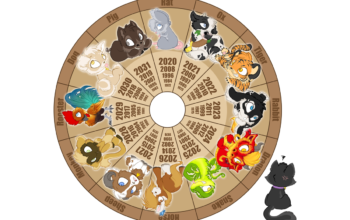Madonna – Live to Tell (1986)
When I was chasing my Bachelor of Music, I fell in love with the weighty guitar work Nocturnal by Benjamin Britten. I selected it as the centerpiece for my graduating recital.
It was written in 1963 and based on a song (Come, Heavy Sleep) composed four centuries earlier by lutenist and fellow countryman John Dowland. Interestingly, Britten himself was neither a lutenist or even a guitarist. That he wrote a guitar work at all was itself remarkable.
[Ed. The lute is, loosely speaking, the ancestor of the guitar, at least in terms of surviving repertoire. In 1963 there were very few lutenists, and in 1597 still fewer guitarists.]
In putting together the recital program, how clever it’d be, I thought, to play the short Dowland piece first, then launch into the much longer Britten opus. Hey, Professors, I get it!
I started in on Come, Heavy Sleep like the afterthought it was. A simple, strophic (i.e., repeated musical verses) form meant that I could learn 16 measures of music and then just, you know, play it again. Peazy.
But alas, my instructor, the late great master Eli Kassner, was having none of it. If you’re going to play an instrumental repetition like they’d have done it in Dowland’s time, Eli admonished, you’ll need to embellish it a lil’. Like, a lot. Like, in a style of extemporization that’s been lost to us for, about, say, 420 years now. And way beyond my humbled skillset.
In the end, I played Nocturnal brilliantly, ifidosaysomyself. But I’d dropped the foundational Dowland ditty from the program, if I knew what was good for me. Some battles are best left unwon, especially those waged with great guitar masters. And that was a good thing, because if I’d played it, the second verse would have sounded as dead as the composer himself. I’d have begun the Britten from a deep yawn position, and it can be tough to earn that excitement back over the course of a 22-minute work.
Improvisation is the spice of performance, even in the finely-notated, locked-down world of classical music. Any adjustments in tiny nuance will make all the difference between a memorable event and a cold manufacturing.
The same is certainly true in popular music’s own version of the forme concrète laboratory, the recording studio. While the programming is certainly more buttoned down there than it is on the stage, there’s still an expectation of gettin’ jiggy with it at execution time. And the time to do it hasn’t changed much in the past 420 years: whenever there’s a repetition or two or three or six, it’s time to show your creative chops.
Best place for this in a pop song? The repetition of the chorus at the end of the song (especially when it does so multiple times in a fade-out; see the post on song structure).
The best singer-songwriter-musicians can do this like it’s a bodily function. Embellishment is the stock-in-trade of a polished musician, the very flourishes that one is measured by. On the second repeat of a chorus, do something with it, damn you. They all know it. The good ones can do it, and do it convincingly, often to the effect of creating earworms that we all remember the rest of the song by.
Live to Tell is a fantastic song. It was one of the thrusts that helped launch Madonna into superstardom, a severe, hard-edged piece of music that counterbalanced Like a Virgin and Material Girl and expanded her range of musical message. Madge herself wrote the lyrics, not the music (Patrick Leonard did that), but no matter; it was her song to record, perform, Madonnize.
The melody of the chorus
A man can tell a thousand lies,
I’ve learned my lesson well…
is in the lower register of Ciccone’s tempered, unspectacular alto, and largely defers to the heavy schlep of the instrumental texture which smartly finishes the chorus with an electrifying charge of descending chords, senza voce. Conjunct and unshapely, her lackluster melody could use a little sumthinsumthin, but it really doesn’t need to shine so long as that wonderful keyboard hook is there to follow.
But when that element repeats at the very end of the song following a truncated keyboard hook (its first two bars only), the singer must do something, the moment commands it (at precisely 5:29). And Madonna can’t answer. She tries, but there’s nothing in her toolbelt. She climbs up a perfect-fourth, hovers on the note for an entire measure, and with no new riff to serve, simply renews her subscription to the original melody, having fired her only bullet one short chorus earlier. She’s done.
Musicians reveal their greatest instincts, their sharpest skills, their most creative inspiration, in the most fleeting of moments. It’s usually at the most critical times, such as the bridge or development of a musical story, or just before the song ends, that last geste d’adieu. It’s what separates the true artists from the product marketers.
Madonna never made any secret of her business acumen. But neither could she keep it a secret – certainly not here – that she will never, not ever, be able to play Dowland.
Come, heavy sleep.



